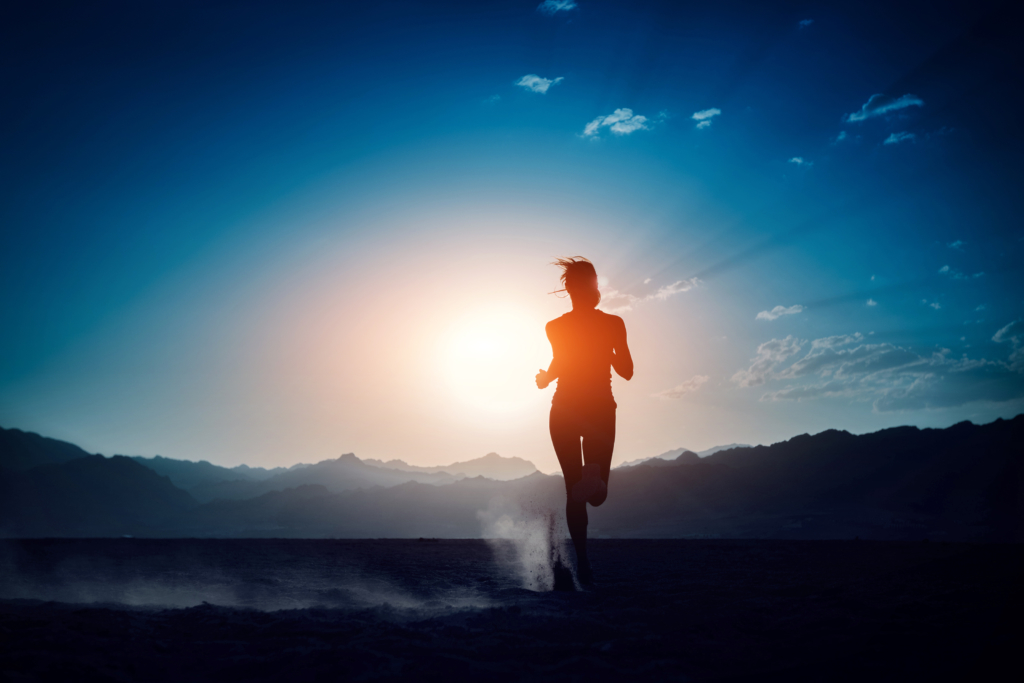Tips for Running in the Heat

Runners have it good in Seattle as far as the heat index is concerned – cool mornings, great shade, low humidity, water front breezes. Ahhhhh… But the dog days of summer are upon us, turning up the risk of heatstroke and dehydration. Here are few tips to chill this risk and run without worry.
- Hydrate adequately prior to and during your run.
- if going for a longer run, drink more fluids the day before the run as well as 2 hours before.
- Within 2 hours prior to run, drink 13-17 oz (400-500 ml) of water
- While running, drink 3.5-4.5 oz (100-125 ml) of fluid (water or sports drink) every 15-20 minutes.
- Take your weight before and after your run, especially the longer runs, to calculate how much water was lost during your run – replenish that amount over the next 8 hours.
- Be cautious of overhydration, also known as hyponatremia. Too much water lowers the normal level of sodium in the blood. Replenish this with sports drinks, pickle juice or salt tablets.
- Avoid running during the hottest times of the day (this is usually between 10:00 am & 6:00 pm).
- Apply sunscreen 20 minutes before leaving the house and wear a visor to protect your face.
- Wear moisture wicking clothes & socks to avoid blisters and chafing.
- Apply “Glide” or “Vasoline” to reduce chafing, especially around bra and shorts lines.
- Plan your route to maximize shade, cool, and drinking fountains – ravines, parks and along waterfronts.
- “Sponge” frequently: water applied to skin acts as artificial sweat and aids in cooling the body*. Bring a bandana along, wet it, wrap it around your neck or forehead and groove that 70’s-look on your run!
- Run slow (this comes easy to me).
- Stop and walk or rest, should you experience any signs of heatstroke.
- If running alone, carry your phone and call for help should signs develop.
Signs and symptoms of impending heatstroke include:
- increased weakness
- clumsiness and stumbling
- headache
- nausea
- dizziness
- apathy
- aggression
- gradual impairment of consciousness
- collapse
Runners who are at greatest risk of getting heat stroke include those who are/have
- Children: they have lower sweating capacity than adults, they produce more heat during exercise than adults, and they acclimatize to heat slower than adults
- Overweight
- Inadequately trained
- Not acclimated to the heat (Hello Seattlites!)
- Recently ill
- Suffered heatstroke before
- Taller than 5’9” (1.79 m)
- Overestimated ability and are running too fast
- Taking certain medications such as diuretics and antidepressants
- A genetic predisposition
The best treatment for heatstroke is an ice bath, or a jump in the Puget Sound! Avoid drinking too much fluid after onset – heatstroke stresses the heart and too much fluid can tax the kidneys when the heart is weakened.
If you want to learn more about how to stay cool and improve your running or for help on starting a running program, come into Stride for running analysis and exercise therapy to transform your performance.
* ACSM guidelines for preventing heatstroke
– Susanne Michaud, DPT, OCS and constant runner (except if it’s too hot!)
